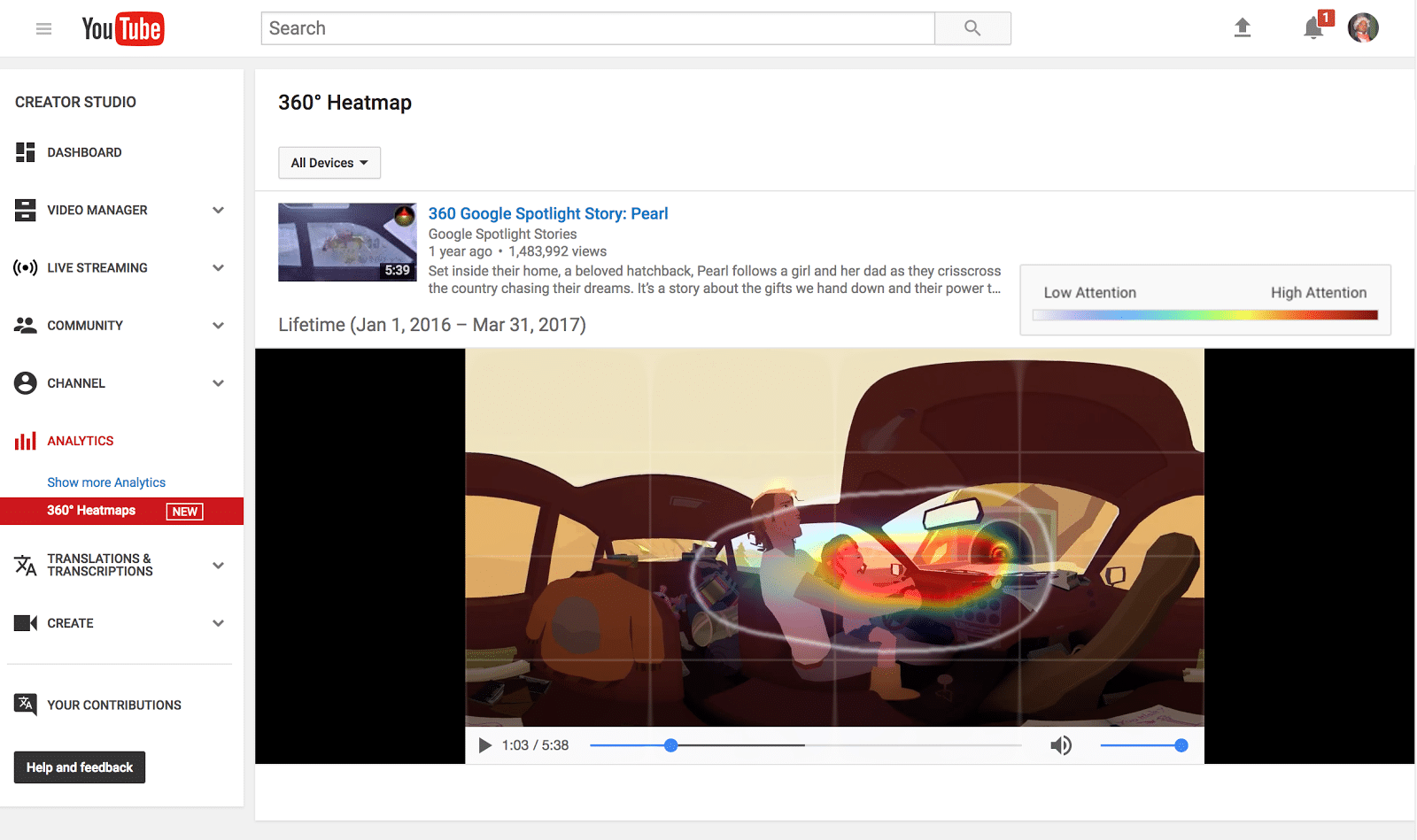
75 percent of time is spent looking at the front 90 degrees of 360 video. This was the key finding from Google’s recent study on gaze in 360 videos on YouTube, including both stereoscopic (headset viewed) and 2 dimensional.
As part of its new offering that lets video creators view heatmaps of viewers’ gaze, it also found that about 20 percent of time in 360 videos is spent looking at what is behind the viewer.
These findings can help inform 360 video creators on where to optimize the positioning of objects throughout the frame. It also indicates an opportunity to draw attention away from that frontal area where attention is fixated.
“The more engaging the full scene is, the more likely viewers will want to explore the full 360-degree view, Google wrote in a blog post. “Try using markers and animations to draw attention to different parts of the scene.”
In addition to positional framing, it’s also a matter of timing:
“The context in which people are viewing VR videos matters too, “wrote Google. “Some might be watching on a mobile and portable Cardboard, while others are watching on a desktop computer. For instance, we found viewers usually need a couple seconds to get situated in Cardboard, which isn’t needed for other devices. So make sure to give your viewers a few seconds before jumping into the action.”

